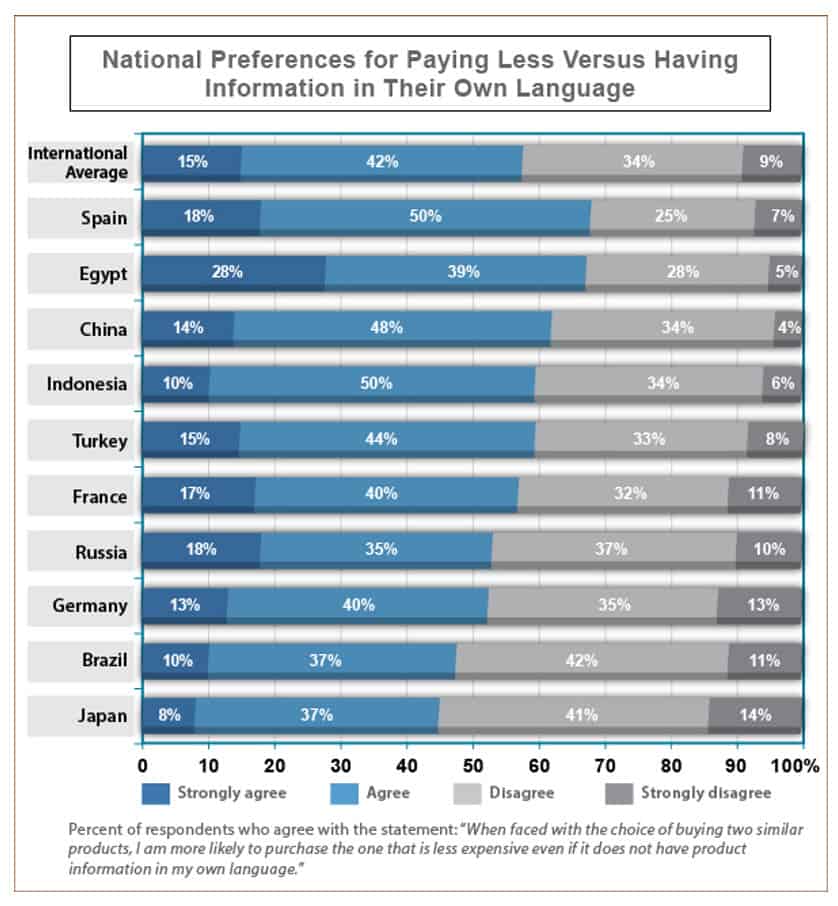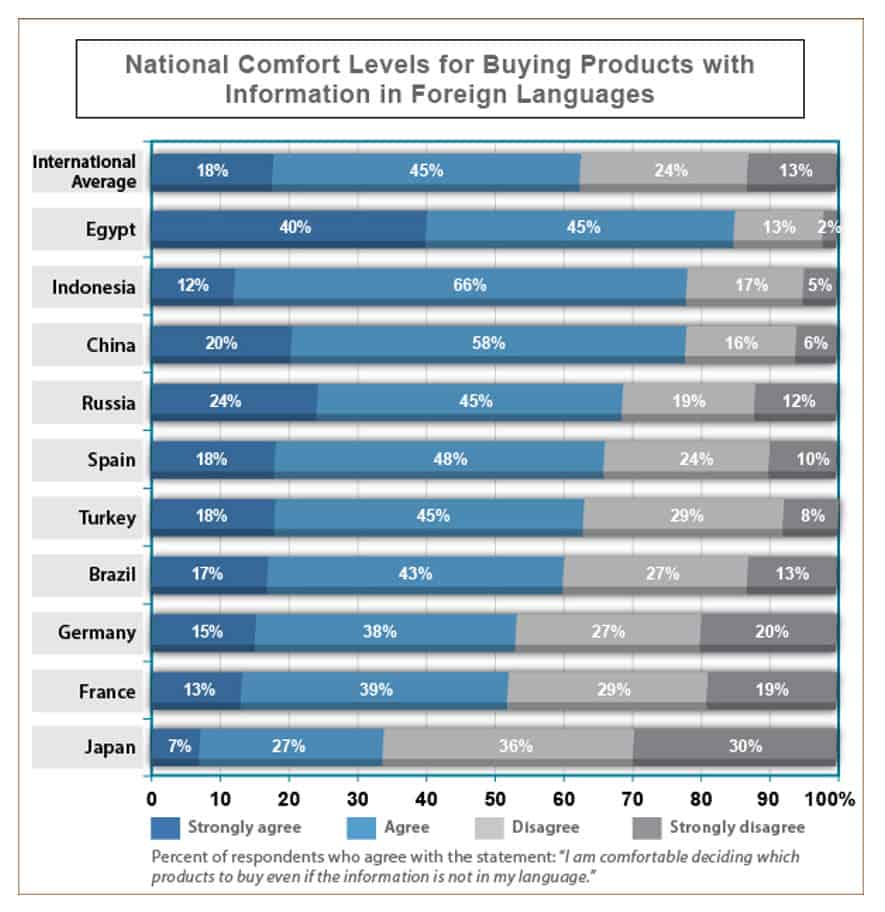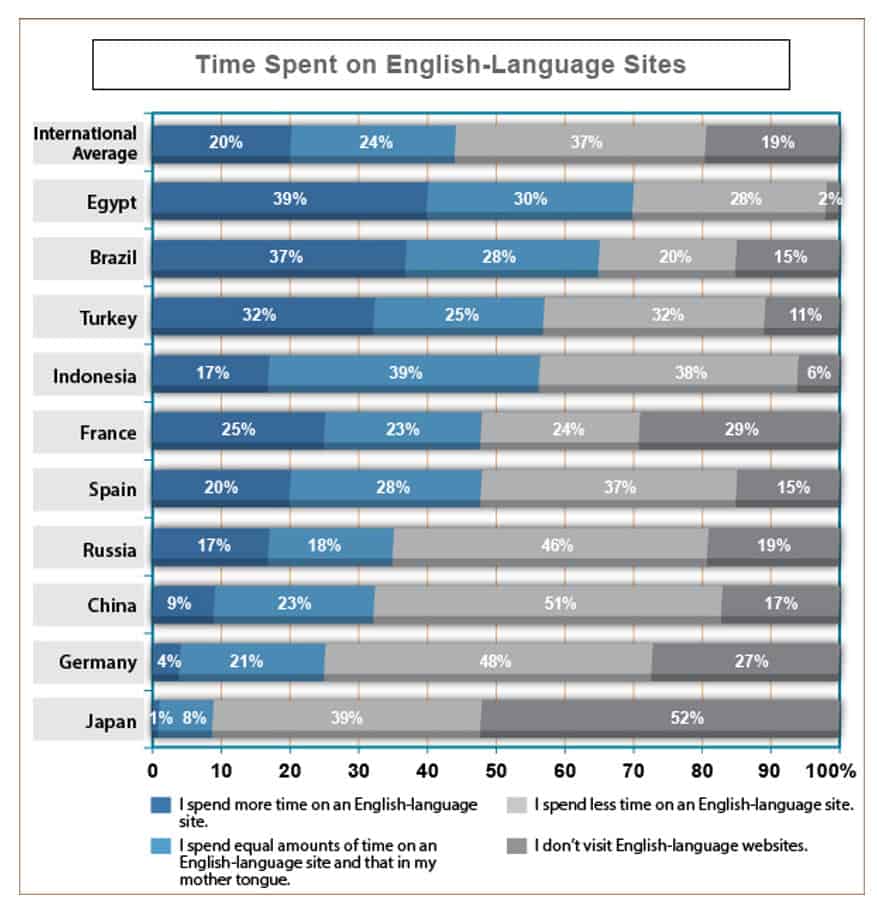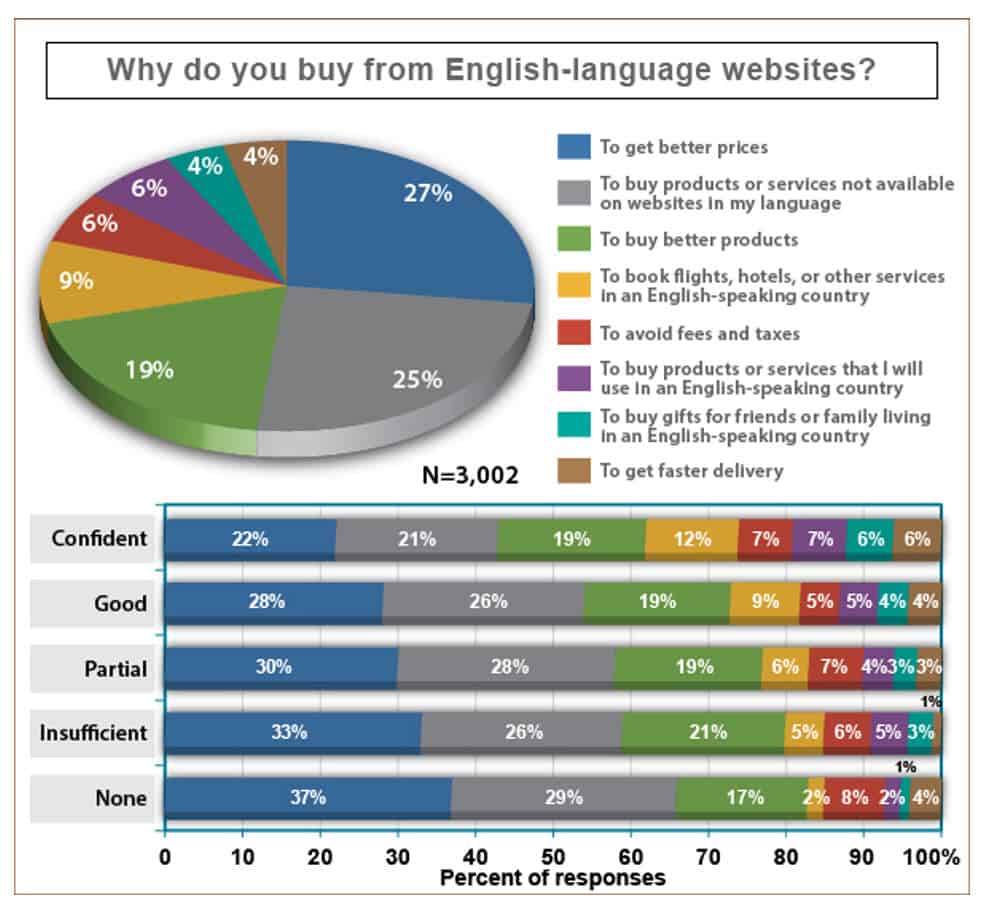In last week’s post, we discussed which countries and demographics might be unwilling or unable to deal with English language websites. This week, we consider a related scenario – audiences who speak reasonable English. Even when your customers speak English, translations drive ecommerce results.
Ian:Let’s say I’m targeting the German market, and I know my target demo is mainly under 40. All the evidence indicates that their English competence is pretty good (ranging from completely fluent to fairly confident), so I can confidently say English competence is high for 80% of my German market. Does this mean then that English is good enough in this instance?
Tim:Even in a scenario like this, in which someone speaks English at a good enough level that he’s reasonably happy hunting his way through your website, the answer is that he still prefers to be on a website in his own language. This is true even when someone speaks really good English. When Germans have two websites to choose from, one in English and one in German, they’ll prefer to go for the German website – it’s just easier for people, which shouldn’t be a surprise. You might get a bit more warmth from it and more precise shadings of meaning and culture, and your brain doesn’t have to work as hard.
Ian:If you don’t have to work at comprehending it seems logical that you can engage fully on different levels much more readily.
Tim:Exactly, so even in this kind of scenario there are still solid arguments for why you should translate into German.
Another consideration is that when English is someone’s second language they’re more likely to go onto an English language website only because he’s looking for a lowest price, so if your goal is to sell your product at a decent margin having English only content is more likely to attract the bargain hunters.
Again, think about the process. Say you have a German customer shopping for a walking jacket who has a particular jacket in mind, and she’s purely shopping for the best price. In this scenario she’ll be going on English language websites because she already knows what she’s looking for so it doesn’t matter what the content says. If you’re really only competing on price then you’re probably OK with English, but you’re narrowing your target customer base away from customers who are keen to consider features and benefits to customers who care only about price.
If you happen to have the lowest price point then fine. But you still haven’t engaged with that price conscious customer if you don’t have your content in her language. Even when you do have people shopping on price, they still have other factors that they’re considering, even if only in the back of their minds – can they trust you to deliver, what happens if they need to return something, and what kind of reviews are visible in a buyer’s market from people in that market as opposed to your company’s home market. If a German customer has two product options at the same price and one is on a German language site with German reviews and content, even if the English content site is slightly cheaper it’s very likely she’ll choose to buy from the German language website. But there are exceptions, for instance the Spanish are particularly price conscious and price trumps language for them. So if you’re targeting Spain, there’s a legitimate argument that you should consider discounting before translation:

The perception is that someone has gone to the trouble to translate the content into German, which means intuitively that that someone is more focused on her and thus more trustworthy and will be get her order.
Also, people should keep in mind that if they’ve gone to the trouble to translate all their product-related sales and marketing content but not the customer care and support portion of their website, this negatively affects the customer’s experience. Bottom line is that in many markets, people just aren’t comfortable buying online from a website that’s not in their own language.

Ian:Another factor surely influenced by the use of English only or translated content is the length of time that you can retain or keep a customer on your website.
Tim:Obviously, people spend more time on websites in their own language, again irrespective of their English competency, and we know that people who engage more with content on a website are more likely to be a confirmed sale. People are also more likely to come back to a website that’s in their own language.

If competing on price point is your sole objective, people will find you and make a one-time purchase because you have the lowest price but they won’t return to your site, or are much less likely to. If you want to establish an ongoing relationship with your customer returning to your site, you really have to make content available in their language. Translation drives sales, and that’s the only reason most organisations invest in it!
Ian:Are there factors that might lead a business to decide not to translate the customer support section of a website when they have translated all the product related content?
Tim:You have to ask yourself if you have the capability ‘in the round’ to satisfy the consumer in that market. You might find yourself in a situation where you invest heavily in translation of your web content and then find you let customers down with other factors that are important to them. Customer care is important – people’s expectations about returns is a big one. In most markets now, including Germany, people who buy online operate under the assumption that they get free returns, so you can do everything else right but make a major error not offering free returns. What’s the point of trying to compete in Germany by having great German content but not offering free returns?
You’ve got to think about this in the round, and put yourself in the shoes of your consumer. This extends of course to thinking about social media; do you do something similar in other markets to what you do for customers’ experience of this in your home market? It’s a commercial decision you make to translate your content with a particular goal in mind and you need to look at your ability to reach that goal which is more than just making all your content available in German or Japanese. If you don’t look at all the aspects needed to reach your goal, for example not thinking about SEO when you’re doing your Japanese translations, that’s a major mistake.






